The effects of fire and seasonal variations on soil properties in Juniperus excelsa M.Bieb.stands in the Alborz Mountains,Iran
Nasim Bagheri Delijani·Alireza Moshki·Mohammad Matinizadeh·Hooman Ravanbakhsh·Elham Nouri
Abstract This study was conducted in Juniperus excelsa stands on the southern slopes of Iran’s Alborz Mountains,to determine the effects of fire and seasonal variations on soil physicochemical properties and enzyme activities.A total of 64 composite soil samples were randomly collected in the spring and fall from two burned and unburned sites at depths of 0-10 and 10-20 cm.The results of a two-way ANOVA analysis indicate that frie increased the organic carbon (OC),total nitrogen (TN),and available phosphorus (Pava) contents of the soil by 16%,59%,and 53%,respectively.Similarly,when burned sites were compared to unburned sites,the activities of acid phosphatase (ACP) and urease enzymes increased by 73% and 12%,respectively.Nevertheless,fire did not affect soil texture,bulk density (BD),pH,electric conductivity (EC),exchangeable potassium (Kexc),or the activities of alkaline phosphatase (ALP) and dehydrogenase.According to two-way ANOVA results,OC,TN,Pava,Kexc,and EC values were significantly higher in the fall,whereas pH and ALP values were significantly higher in the spring.Additionally,phosphorous and dehydrogenase activity were significantly different in selected soil factors at 0-10 and 10-20 cm depths.The interaction of fire,season,and soil depth were significant for phosphorous and urease.Moreover,the activity of ALP correlated well with pH (r=0.68),P (r=-0.74),OC (r=-0.53),and TN (r=-0.37),whereas the activity of ACP correlated significantly with OC (r=0.64) and TN (r=0.71).Two years after the fire,soil properties in J.excelsa stands had either improved or remained unaffected,returning to pre-fire levels.Additionally,soil chemical properties varied signif ciantly across sampling seasons,which should be considered when comparing and interpreting soil data in future research.
Keywords Dehydrogenase·Acid &alkaline phosphatases·Seasonal variations·Soil physicochemical properties·Urease
Introduction
Fire alters soil physicochemical and biological properties temporarily or permanently (Neary et al.2005;Ngole-Jeme 2019).The energy released by fire affects chemical soil properties such as pH,electrical conductivity (EC),moisture content,and the availability and cycling of nutrients (Hamman et al.2008).Additionally,fire can increase bulk density,reducing soil porosity and capacity to retain water,resulting in increased runoffand soil erosion (Neill et al.2007;Scharenbroch et al.2012).Furthermore,by sterilizing the soil surface,burning can reduce soil microorganism biomass and alter the composition of the microbial community (Certini 2005).However,despite limiting fire’s role in soil biological diversity,the ecological consequences have rarely been significant and long-lasting(Certini et al.2021).Thus,because soil enzymes are critical for carbon,nitrogen,and phosphorus cycling (Boerner et al.2005),they may be used as an early indicator of fire effects on soil quality,as they reflect microbial activity and respond rapidly to environmental changes (Lin et al.2017).
On the other hand,research on the effects of fire on soil properties are quite varied.The degree of impact is highly dependent on fire intensity,pre-fire land use,the type of ash produced,topography,the post-fire weather,and the degree of vegetation restoration (Ponder et al.2009;Heydari et al.2017).However,many ecosystems are resilient to fire and quickly recover (Pereira et al.2018).The intensity of a fire is determined by several environmental factors,including the quantity,type,and moisture content of the wood,wind speed,topography,and the climate conditions at the site (Certini 2005).For example,low to moderate fires can improve soil structure stability by forming a hydrophobic layer on soil aggregates (Mataix-Solera and Doerr 2004),whereas severe fires reduce structure stability by disrupting organic material (Badia and Marti 2003).
Nevertheless,soil texture is highly resistant to heating and can be altered by fire only at extremely high temperatures such as 460-980°C for clay and 1400°C for sand(Ngole-Jeme 2019).Additionally,fire typically increases nitrogen and carbon in the soil (Johnson and Curtis 2001;Zhang et al.2011).Inbar et al.(2014),on the other hand,discovered that severe fires reduced the amount of organic matter and nitrogen.in burned areas.Athough denaturation of organic acids by heating can increase soil pH(Scharenbroch et al.2012),this increase is not consistent and can last one to several years depending on ecosystem characteristics (Granged et al.2011a).Furthermore,Hernández et al.(1997) reported decreased urease and ACP activity in forest soils following a fire.In contrast,Matinizadeh and Gudarzi (2013) found no significant difference in ACP,ALP,and dehydrogenase activity three years after a fire in a rangeland ecosystem.
Iran’s Alborz Mountains have a diverse range of topographic and geologic features.The northern slopes are covered in Hyrcanian temperate deciduous forests,while the southern slopes have woodlands,mountainous semi-arid forests,and vast steppe rangelands (Sagheb-Talebi et al.2014;Ravanbakhsh 2016).Juniperus excelsais a unique tree species found on the southern slopes of the Alborz Mountains between 1700 and 2800 m a.s.l.(Ravanbakhsh et al.2015).Each year hundreds of natural and man-made fires pose a serious threat to this forest species (Banj Shafiei et al.2010).
Most previous research has concentrated on the effects of fire on vegetation alterations,primarily in the Hyrcanian temperate deciduous forests on the Alborz Mountains northern slopes.This study was carried out inJ.excelsastands on the southern slopes to determine the effects of fire on soil physicochemical properties and enzyme activities of ACP,ALP,urease,and hydrogenase and to reveal the interrelationships between two seasons,spring and fall.
Materials and methods
Study site description
The study was conducted at the Sirachal Research Station located on the southern slopes of the Alborz Mountains(51°10′ E,36°1′ N) characterized by a cold,semi-arid climate and shallow soils with high gravel content (Eskandari and Khoshnevis,2020).Annual mean temperature is 12.8°C,and precipitation is 531 m.Elevation is 2000 and 2200 m a.s.l.and slopes are south-facing with gradients from 50 to 60% (Fig.1).In this area,the dominant tree species isJuniperus excelsa,and the understory shrub vegetation in the unburned area consisted ofLonicera nummulariifoliaJaub and Spach.Cerasus microcarpa(C.A.Mey.) Boiss.,Cotoneaster nummulariusFisch and C.A.Mey.,andBerberis integerrimaBunge.The ground soil is covered withAcanthophyllum glandulosumBunge.ex Boiss.,Silene aucherianaBoiss.,Artemisia aucheriBoiss.,Euphorbia cheiradeniaBoiss.&Hohen.,Psathyrostachys fragilis(Boiss.) Nevski,Bromus tomentellusBoiss.,Astragalus verusOlivier-Voy.
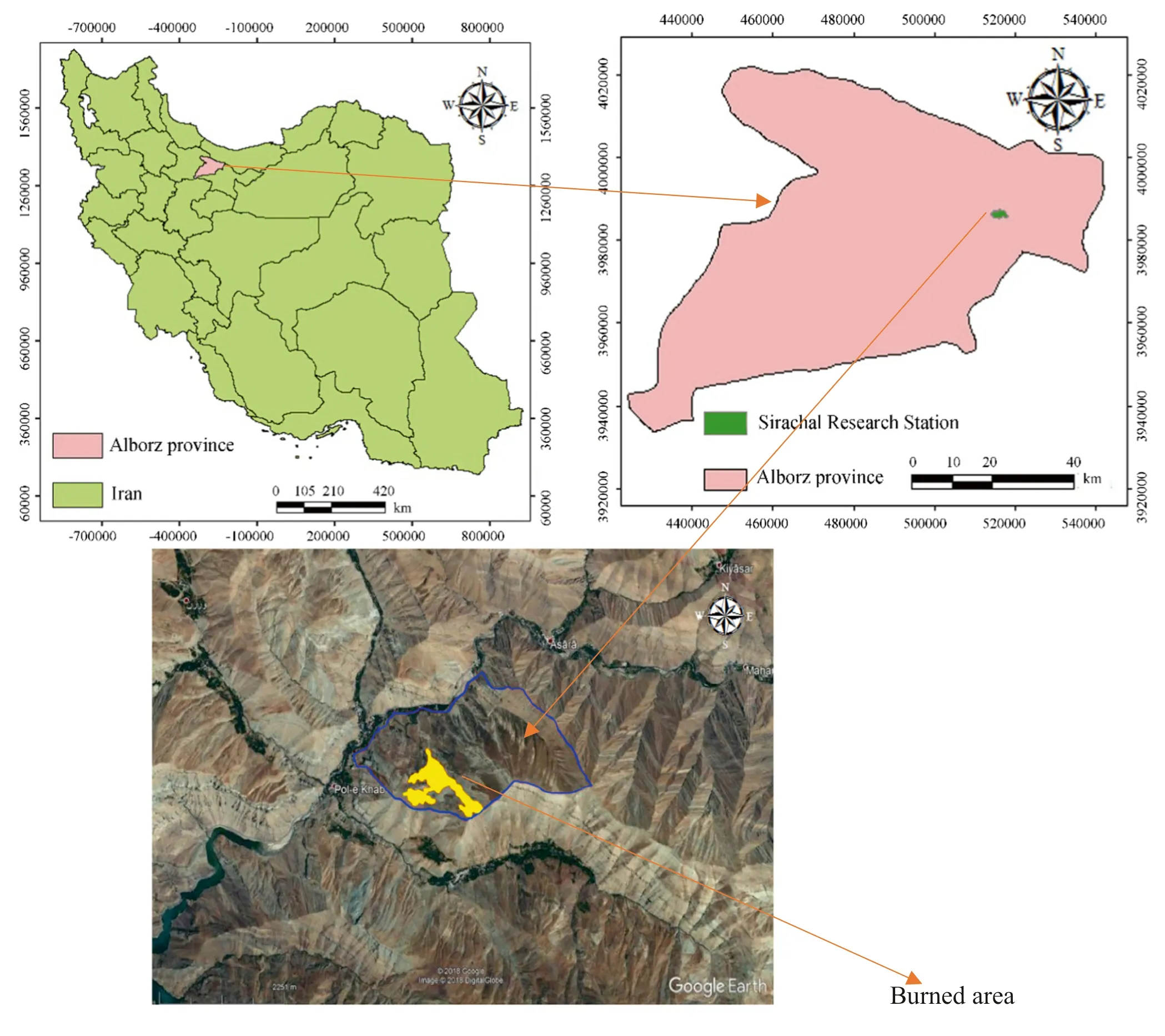
Fig.1 Location of study area
Soil sample collection
In April 2015,a fire burned approximately 20 hectares in this region.Two years later,soil samples were collected in the spring (April) and fall (November).Eight 25 m×25 m sample plots were randomly established in each burned site and control site.Litter was removed and soil samples collected at depths of 0-10 and 10-20 cm.Each sample was created by combining six subsamples to produce 64 composite soil samples (2 burned and control sites×2 seasons×2 depths×8 replicates).
Laboratory analysis
Soil texture was determined using the hydrometer method and bulk density determined according to Haveren (1983).The pH and EC were determined in a saturated soil paste(Janzen 1993).Organic carbon was determined using a wet oxidation titration procedure with an acid dichromate system(Walkley and Black 1934),and total nitrogen determined using the Kjeldahl method (Bremner and Mulvaney 1982).Pava(available phosphorous) was extracted with 0.5 M NaHCO3,and the ascorbic acid molybdate method used to determine its calorimetric composition (Olsen and Summers 1982).Kexc(exchangeable potassium) values were extracted from the soil using NH4C2H3O2and analyzed using an atomic absorption spectrophotometer equipped with a flame atomizer (Warncke and Brown 1998).
ACP and ALP activities were determined in aliquots of 1 g of soil (wet weight) from each treatment using p-nitrophenyl phosphate (pNPP) as an orthophosphate monoester analog substrate expressed as a percentage of the soil dry weight.Soil samples were incubated at 37-°C for 1 h after adding a buffered nitrophenyl phosphate solution.Nitrophenol was extracted and quantified photometrically at 400 nm due to released phosphomonoesterase activity (Schinner et al.1996).
Urease was used at a concentration of 20 mM in the assay wells.The plates were incubated at 20°C for approximately 18 h.The ammonium released by the reaction was quantified using colorimetric salicylate and cyanurate reagent packets from Hach (Loveland,CO,USA).At 610 nm,urease was determined spectrophotometrically.The activity was expressed on an hourly basis in micromoles of ammonium released per gram of soil (μmol NH4+g-1h-1) (Sinsabaugh et al.2000).The dehydrogenase activity was determined using 2,3,5-triphenyl tetrazolium chloride (TTC) as the substrate,and the results were expressed as g triphenyl formazan (TPF) g-1dry soil h-1.Samples and controls(along with the substrate after the reaction) were analyzed in triplicate and averaged.Controls for the dehydrogenase assay were performed using Tris-HCl buffer rather than TTC (Maikornes 1993).
Statistical analyses
The effects of fire,sampling time,and depth,(each factor having two levels),and their interactions were determined by two-way ANOVA.Additionally,Pearson’s correlation coefficients were used to examine the relationship between soil enzymes and chemical parameters.SPSS 26 software was used to conduct the analyses.
Results
Two-way ANOVA revealed that fire increased soil OC,TN,and Pavaby 15.5%,59.3%,and 52.9%,respectively.Similarly,when burned sites were compared to unburned sites,the activities of acid phosphatase and urease enzymes increased by 73.1% and 11.7%,respectively (Table 1,Figs.2 and 3).
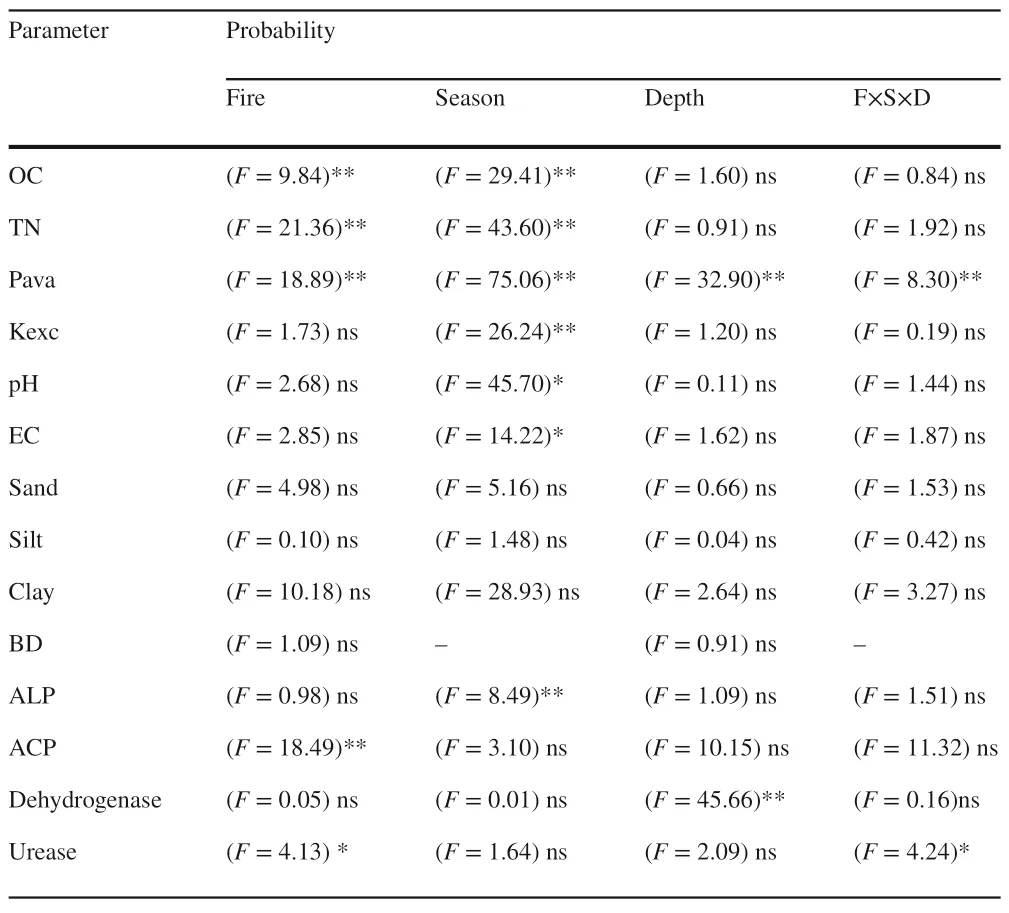
Table 1 Two-way ANOVA results for soil variables in the study area
However,pH ranged from 7.2 to 7.7,EC from 246 to 470 μmohscm-1,Kexcfrom 14 to 191 mg kg-1,and BD from 1.6 to 1.8 g cm-3,with no statistically significant differences between burned and control sites (Tables 1 and 2).Similarly,there were no significant differences between burned and unburned sites in soils with sand content ranging from 28 to 41%,silt contents ranging from 37 to 44%,and clay contents ranging from 22 to 32%.(Tables 1 and 2).The activities of ALP and dehydrogenase were not significantly different between burned and unburned sites (Tables 1 and 2).
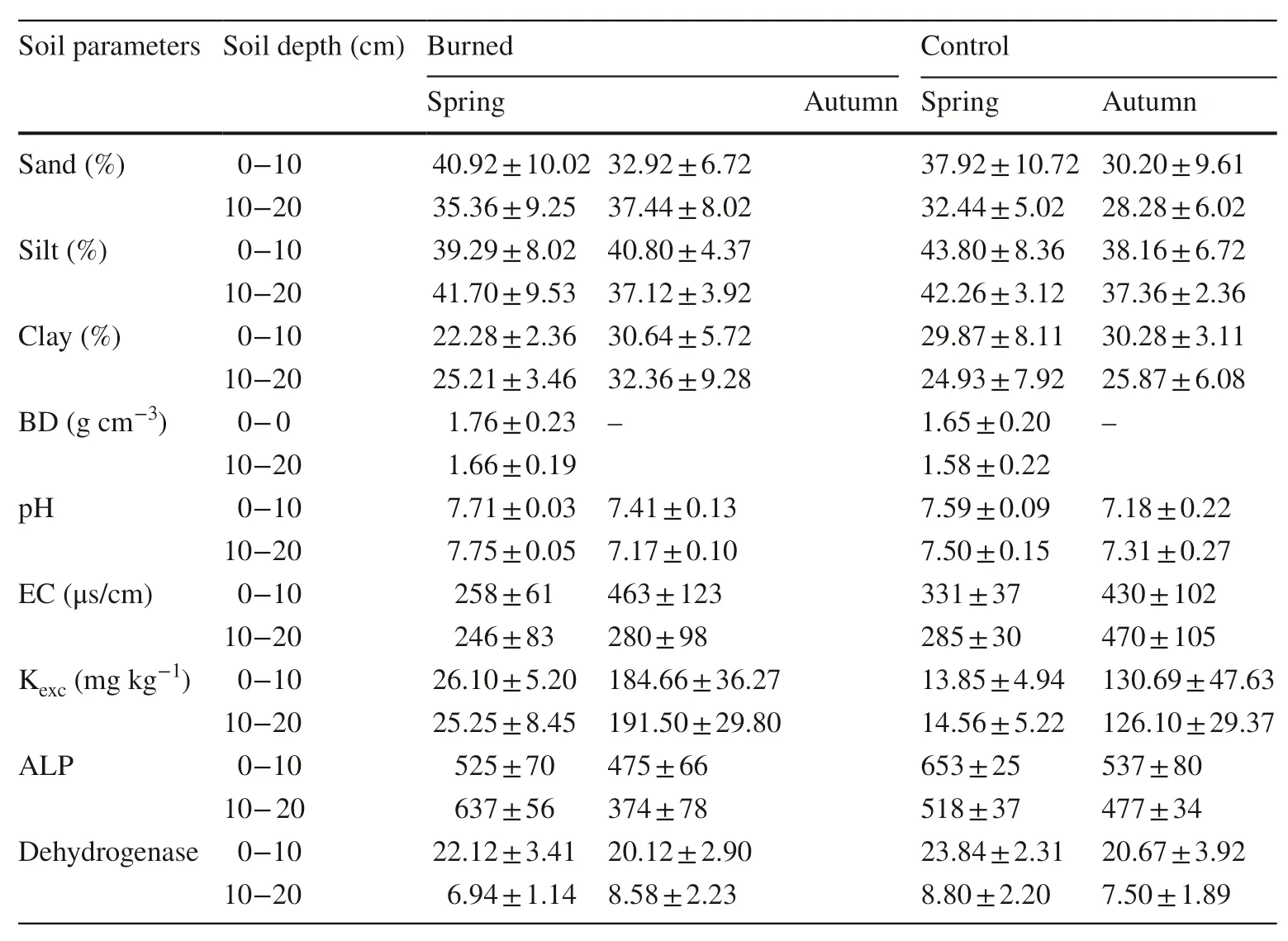
Table 2 The effects of fire on soil physicochemical and biological properties

Table 3 Correlation coefficient(r) between soil enzyme activities and chemical soil properties
The activity of ALP showed a significant correlation with pH (r=0.68),P (r=-0.74),OC (r=-0.53),and TN(r=-0.37,Table 3).Additionally,ACP activity had a significant correlation with OC (r=0.64) and TN (r=0.71),while dehydrogenase activity had a significant correlation with Pava(r=0.40,Table 3).
Fall values for OC,TN,Pava,Kexc,and EC were higher,whereas spring values for pH and ALP activity were significantly higher (Table 1).However,seasonal variations in the sand,silt,and clay content of the soil,as well as the activities of ALP,urease,and dehydrogenase,were not observed(Table 1).Among the selected soil physicochemical and biological variables,the activities of Pavaand dehydrogenase were significantly different at 0-10 and 10-20 cm depths(Table 1).For Pavaand urease,the interaction between fire,sampling season,and soil depth was significant (Table 1).
Discussion
In general,the study’s findings indicate that both fire and sampling time resulted in significant differences in soil parameters two years after the fire (Table 1).Additionally,the results indicate that the burned site contained higher levels of OC and TN than the control site (Fig.2),which is consistent with the findings of Zhang et al.(2011) and Covington and Sackett (1992).Contrary to the findings,Bell and Binkley (1989) and Fynn et al.(2003) reported lower OC and TN contents in burned sites compared to unburned sites,while Banj Shafiei et al.(2010) and Moghaddas and Stephens (2007) discovered no effect of fire on the levels of these elements.

Fig.2 The effects of fire,sampling time and depth on OC,TN and Pava
The increase in OC of soil following a fire can be attributed primarily to the burning of forest floor vegetation,dead plants,and roots of standing trees,as well as the decomposition of biochemically resistant residues caused by the fire’s heat and subsequent addition to the soil surface horizon.Several studies have been published on this subject (Oluwole et al.2008;Granged et al.2011b;Scharenbroch et al.2012).As expected,changes in TN following a fire in the study site were accompanied by changes in organic carbon content(Fig.2),as almost all soil nitrogen reserves are derived from organic matter.Additionally,Hamman et al.(2008) hypothesized that environmental variables such as soil moisture,leaching rate,l erosion intensity,and soil sampling depth could influence the effect of fire on soil nitrogen.Capra et al.(2018) hypothesized that the increase in soil organic carbon and nitrogen is entirely dependent on-site conditions.Like the study site conditions,Rau et al.(2009) demonstrated that fire increases soil organic matter and nitrogen in semi-arid ecosystems.
Additionally,the findings indicate that fire increased the amount of Pava(Fig.2).Because phosphorus is primarily found in soil and not in plant residuals,burning organic matter may have a negligible effect on soil phosphorus content.However,after a fire,phosphorus in its organic form is more available to the plant (Neary et al.1999).The findings are consistent with those of Xue et al.(2014),who found an increase in phosphorus levels six years after a fire in southern China’sPinus massonianaLamb.forests.
ACP and urease were significantly more active on the burned site than on the control site (Fig.3).Borgogni et al.(2019) observed an immediate decrease in total enzyme activity that disappeared 10 months after fire when some enzymes such as beta-glucosidase and ALP were restored or even greater levels than pre-fire levels in a Mediterranean mixed pine-oak forest.Fairbanks et al.(2020) studied the activity of seven enzymes in a coniferous watershed in New Mexico three weeks after a wildfire and found an overall decrease only for β-1,4-glucosidase,β-D-cellobiohydrolase,and nitrogen (N) β-1,4,N-acetylglucosaminidase activities.The higher OC content in this study may account for the increased activity of enzymes at the burned site,as organic material decomposition requires the presence of soil microorganisms and enzymes (Schimel and Bennett 2004;Floch et al.2009).In agreement,it was discovered that a significant positive correlation between OC and ACP activity in soil existed (r=0.64,Table 3),confirming the study justification.In contrast to the study findings,Matinizadeh and Gudarzi (2013) demonstrated lower ACP,ALP,and dehydrogenase activities on burned versus unburned sites in an Iranian rangeland ecosystem.On the other hand,despite increased OC levels in burned areas,the activities of ALP and dehydrogenase remained unaffected following fire(Table 1).According to Wei et al.(2012),soil organic matter and nutrient contents and the microbial community and environment of the soil all play a significant role in enzyme activity.
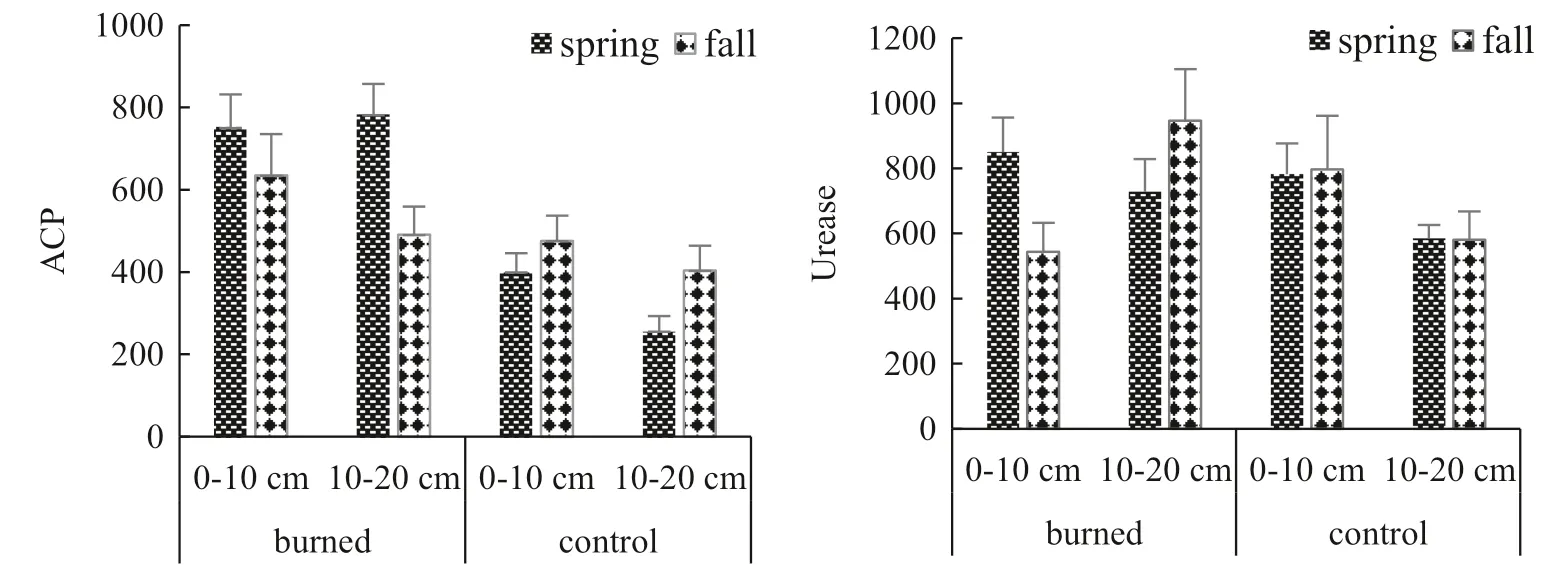
Fig.3 The effects of fire,sampling time and depth on activity of ACP (μgp-nitrophenolg-1 soil h-1) and urease (μg N/g.dm.2 h) enzymes
Due to its effect on the concentrations of inhibitors or activators in the soil solution and the effective concentration of the substrate,pH had a substantial effect on enzyme activities (Dick et al.2000;Błońska et al.2016).ALP activity in the study site was positively correlated with pH (r=0.68,Table 3),confirming the findings of Wang et al.(2006) that higher pH promotes ALP activity.Additionally,there was a statistically significant negative correlation between soil Pavaand ALP activity (r=-0.74,Table 3).This finding is consistent with Riffaldi et al.(2008) observation that a higher phosphorus content in the soil can inhibit ALP activity.Nevertheless,Zhong et al.(2007) reported that phosphorus fertilization might increase phosphatase activity.
No significant changes in pH or EC were observed two years after the fire (Table 1).However,Granged et al.(2011a) suggested that both may increase following fire due to the loss of organic acids and the release of mineral ions,which typically return to pre-fire levels after one to several years.
In the study site,fire did not affect soil texture (Table 1).On the one hand,fire has a more significant effect on soil biological and chemical properties than on its physical properties (Heydari et al.2012).In contrast to soil structure,which may deteriorate rapidly following a fire due to the loss of organic matter,soil texture has a high thermal threshold and remains relatively unaffected by temperatures below 400°C (Neary et al.2005).However,previous studies have documented changes in soil texture due to fire(Badia and Marti 2003;Mataix-Solera and Doerr 2004).Additionally,slightly lower but not statistically significant bulk density (BD) values were observed in burned sites than unburned sites,e.g.,1.6 versus 1.7 g cm-3(Table 2).Fire can increase BD when the organic content is disrupted at high temperatures (Badia and Marti 2003),whereas organic matter increased in the study site following the fire (Fig.2).
Within a year,the different sampling seasons affected the soil chemical properties (OC,TN,Pava,Kexc,pH,and EC) plus ALP enzyme activity (Table 1).The higher OC and TN in the fall could be attributed to the accumulation of organic matter in the soil due to plant litter,decreased soil temperatures,and decreased microbial activity.Consistently,ALP activity was lower in the fall than in the spring(Fig.3),consistent with Kang and Freeman et al.(1999).In contrast to our findings,Matinizadeh et al.(2008) found that ALP activity was higher in the fall than in the spring in an IranianJuniper excelsahabitat.Bergstrom et al.(1998)suggested that seasonal patterns do not affect the activity of soil enzymes,which agrees with our findings for ACP,urease,and dehydrogenase activities (Table 1).The contents of Pavaand Kexcwere significantly higher in the fall than in the spring (Table 1),most likely due to the plants reduced requirements and uptake.
Among the selected soil physicochemical and biological parameters,Pavacontent and dehydrogenase activity were significantly different in the two-soil depth of 0-10 and 10-20 cm (Table 1).In contrast to these findings,Kim et al.(1999) discovered a higher pH,total nitrogen,and potassium in the 0-5 cm layer than in the 5-25 cm layer in burnedPinus densifloraSiebold &Zucc.stands.
Conclusion
Fire improved soil fertility in theJuniperus excelsahabitat by increasing the concentrations of organic carbon,total nitrogen and available phosphorous and the activity of acid phosphatase and urease enzymes.Additionally,there were no effects of fire on soil texture,BD,pH,EC,Kexc,alkaline phosphatase and hydrogenase activities,and remained unaffected or restored to pre-fire levels.The findings of this study add to the body of knowledge regarding the rehabilitative role of controlled fires in specific ecosystems.Additionally,in contrast to soil texture and enzyme activity,soil chemical properties varied significantly across sampling seasons,which should be considered when comparing and interpreting soil data in future research.The effects of fire on soil properties were examined two years after the event,but decreased vegetation cover may increase runoffon the soil surface and nutrient leaching.Thus,future research on soil and vegetation status is critical to increasing the understanding of the long-term effects of fire on the entire ecosystem.
Declarations
Conflict of interestThe authors declare no conflict of interest.
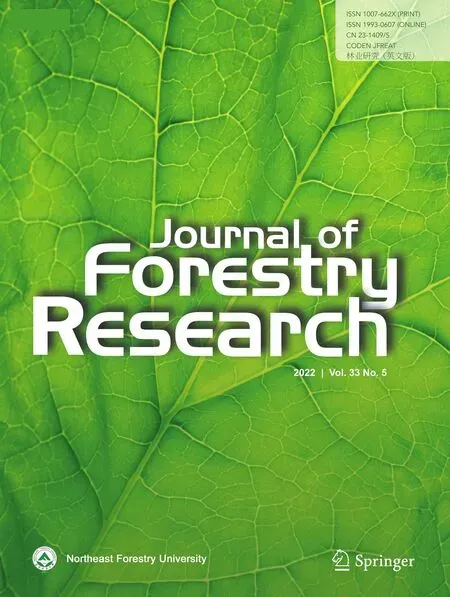 Journal of Forestry Research2022年5期
Journal of Forestry Research2022年5期
- Journal of Forestry Research的其它文章
- A review of the effects of forest fire on soil properties
- Correction To:Epidemiological derivation of flux-based critical levels for visible ozone injury in European forests
- Correction to:The dissemination of relevant information on wildlife utilization and its connection with the illegal trade in wildlife
- Improved guidelines for any-aged forestry
- Fuel and vegetation changes in southwestern,unburned portions of Great Smoky Mountains National Park,USA,2003–2019
- Responses of terrestrial bryophytes to simulated climate change in a secondary evergreen broad-leaved forest in southern China
